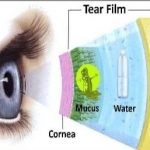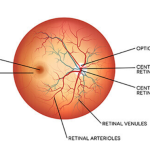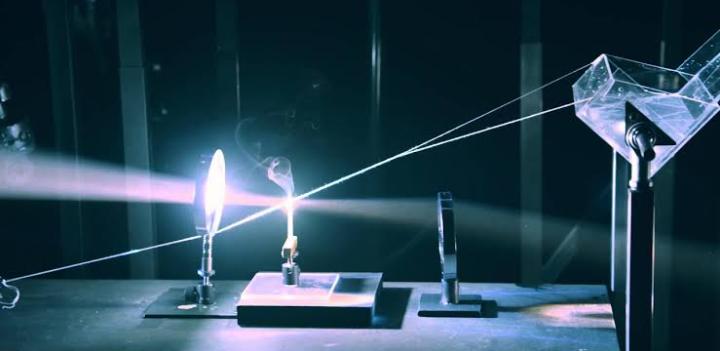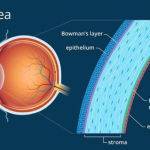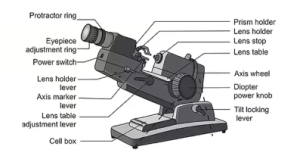Cornea
The human cornea, a transparent and delicate tissue, plays a crucial role in our ability to see the world around us. As the outermost layer of the eye, it protects the delicate inner structures while refracting light to facilitate clear vision. However, the cornea is susceptible to various injuries and diseases, which can lead to vision loss or even blindness. Corneal regeneration, a complex and challenging process, has long been a topic of interest in the field of ophthalmology. Recent advancements in stem cell therapy have brought new hope to the treatment of corneal disorders, offering a promising solution for corneal regeneration.
The Challenges of Corneal Regeneration
Corneal regeneration is a multifaceted process that involves the coordinated effort of various cell types, growth factors, and molecular signals. The cornea is composed of several distinct layers, each with its unique cellular and extracellular matrix composition. The outermost epithelial layer, the stroma, and the endothelial layer all work together to maintain corneal transparency and function. When the cornea is injured or diseased, the delicate balance between these layers is disrupted, leading to vision loss or other complications.
Traditional treatments for corneal disorders, such as corneal transplantation, have several limitations. Donor corneas are often in short supply, and the risk of rejection or graft failure is high. Additionally, corneal transplantation is a complex surgical procedure that requires significant expertise and resources. As a result, researchers have been exploring alternative approaches to corneal regeneration, including the use of stem cells.
Stem Cells and Corneal Regeneration
Stem cells are undifferentiated cells that have the unique ability to differentiate into various cell types. In the context of corneal regeneration, stem cells offer a promising solution for several reasons. Firstly, stem cells can differentiate into corneal epithelial cells, stromal cells, or endothelial cells, allowing for the repair or replacement of damaged corneal tissue. Secondly, stem cells have the ability to secrete growth factors and other signaling molecules that promote tissue repair and regeneration. Several types of stem cells have been investigated for their potential in corneal regeneration, including:
1. Embryonic Stem Cells (ESCs): ESCs are derived from embryos and have the ability to differentiate into all three germ layers. While ESCs have shown promise in corneal regeneration, their use is limited by ethical concerns and the risk of tumor formation.
2. Induced Pluripotent Stem Cells (iPSCs): iPSCs are generated from adult cells, such as skin or blood
cells, and have the ability to differentiate into various cell types. iPSCs offer a promising alternative to ESCs, as they can be generated from the patient’s own cells, reducing the risk of rejection.
3. Mesenchymal Stem Cells (MSCs): MSCs are adult stem cells that can differentiate into various cell
types, including corneal cells. MSCs have been shown to promote corneal regeneration by secreting
growth factors and other signaling molecules.
4. Limbal Stem Cells (LSCs): LSCs are adult stem cells that reside in the limbus, a region at the periphery of the cornea. LSCs are responsible for maintaining the corneal epithelium and have been shown to play a crucial role in corneal regeneration.
Mechanisms of Stem Cell-Mediated Corneal Regeneration
Stem cells promote corneal regeneration through several mechanisms, including:
1. Differentiation: Stem cells can differentiate into corneal cells, replacing damaged or lost tissue.
2. Paracrine Signaling: Stem cells secrete growth factors and other signaling molecules that promote
tissue repair and regeneration.
3. Immunomodulation: Stem cells have immunomodulatory properties, reducing inflammation and
promoting a favorable environment for tissue regeneration.
4. Cellular Cross-Talk: Stem cells interact with resident corneal cells, promoting the exchange of
signaling molecules and facilitating tissue regeneration.
Current Status and Future Directions
Stem cell therapy for corneal regeneration is still in its infancy, with several ongoing clinical trials and preclinical studies. While promising results have been reported, several challenges need to be addressed before stem cell therapy can become a mainstream treatment for corneal disorders.
1. Cell Source and Expansion: A reliable source of stem cells is essential for corneal regeneration.
Researchers are exploring various cell sources, including iPSCs, MSCs, and LSCs.
2. Cell Differentiation and Integration: Stem cells must differentiate into functional corneal cells and integrate into the existing tissue. Researchers are investigating various differentiation protocols and biomaterials to facilitate cell integration.
3. Immunogenicity and Safety: Stem cells must be immunogenicity-tested to ensure their safety and
efficacy in corneal regeneration. Researchers are exploring various strategies to minimize the risk of
immune rejection, including the use of immunosuppressive agents and the development of stem cell-
based therapies that can evade the immune system.
Clinical Trials and Future Directions
Several clinical trials are currently underway to investigate the safety and efficacy of stem cell therapy for corneal regeneration. These trials are evaluating the use of various types of stem cells, including ESCs, iPSCs, MSCs, and LSCs, in patients with different types of corneal disorders. While the results of these clinical trials are promising, there is still much to be learned about the use of stem cells for corneal regeneration. Future research should focus on optimizing stem cell-based therapies, improving our understanding of the mechanisms underlying stem cell-mediated corneal regeneration, and developing new strategies to overcome the challenges associated with stem cell therapy.
Conclusion
Corneal regeneration is a complex and challenging process that requires the coordinated effort of
various cell types, growth factors, and molecular signals. Stem cell therapy offers a promising solution for corneal regeneration, as it provides a renewable source of cells that can differentiate into functional corneal cells. While there are still several challenges that need to be addressed, the results of ongoing clinical trials and preclinical studies suggest that stem cell therapy may become a mainstream treatment for corneal disorders in the near future.



